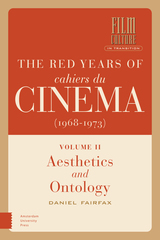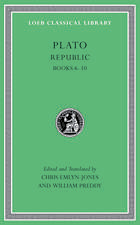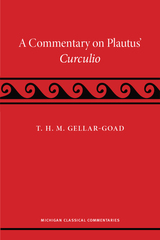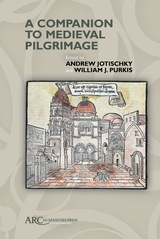8 start with R start with R


The Loeb edition of early Latin writings is in four volumes. The first three contain the extant work of seven poets and surviving portions of the Twelve Tables of Roman law. The fourth volume contains inscriptions on various materials (including coins), all written before 79 BCE.
Volume I. Q. Ennius (239–169) of Rudiae (Rugge), author of a great epic (Annales), tragedies and other plays, and satire and other works; Caecilius Statius (ca. 220–ca. 166), a Celt probably of Mediolanum (Milano) in N. Italy, author of comedies.
Volume II. L. Livius Andronicus (ca. 284–204) of Tarentum (Taranto), author of tragedies, comedies, a translation and paraphrase of Homer's Odyssey, and hymns; Cn. Naevius (ca. 270–ca. 200), probably of Rome, author of an epic on the 1st Punic War, comedies, tragedies, and historical plays; M. Pacuvius (ca. 220–ca. 131) of Brundisium (Brindisi), a painter and later an author of tragedies, a historical play and satire; L. Accius (170–ca. 85) of Pisaurum (Pisaro), author of tragedies, historical plays, stage history and practice, and some other works; fragments of tragedies by authors unnamed.
Volume III. C. Lucilius (180?–102/1) of Suessa Aurunca (Sessa), writer of satire; The Twelve Tables of Roman law, traditionally of 451–450.
Volume IV. Archaic Inscriptions: Epitaphs, dedicatory and honorary inscriptions, inscriptions on and concerning public works, on movable articles, on coins; laws and other documents.

The Platonic ideal of government.
Plato of Athens, who laid the foundations of the Western philosophical tradition and in range and depth ranks among its greatest practitioners, was born to a prosperous and politically active family ca. 427 BC. In early life an admirer of Socrates, Plato later founded the first institution of higher learning in the West, the Academy, among whose many notable alumni was Aristotle. Traditionally ascribed to Plato are thirty-six dialogues developing Socrates’ dialectic method and composed with great stylistic virtuosity, together with thirteen letters.
Republic, a masterpiece of philosophical and political thought, concerns righteousness both in individuals and in communities, and proposes an ideal state organized and governed on philosophical principles. This edition, which replaces the original Loeb edition by Paul Shorey, offers text, translation, and annotation that are fully current with modern scholarship. The Loeb Classical Library edition of Plato is in twelve volumes.

Plato, the great philosopher of Athens, was born in 427 BCE. In early manhood an admirer of Socrates, he later founded the famous school of philosophy in the grove Academus. Much else recorded of his life is uncertain; that he left Athens for a time after Socrates' execution is probable; that later he went to Cyrene, Egypt, and Sicily is possible; that he was wealthy is likely; that he was critical of 'advanced' democracy is obvious. He lived to be 80 years old. Linguistic tests including those of computer science still try to establish the order of his extant philosophical dialogues, written in splendid prose and revealing Socrates' mind fused with Plato's thought.
In Laches, Charmides, and Lysis, Socrates and others discuss separate ethical conceptions. Protagoras, Ion, and Meno discuss whether righteousness can be taught. In Gorgias, Socrates is estranged from his city's thought, and his fate is impending. The Apology (not a dialogue), Crito, Euthyphro, and the unforgettable Phaedo relate the trial and death of Socrates and propound the immortality of the soul. In the famous Symposium and Phaedrus, written when Socrates was still alive, we find the origin and meaning of love. Cratylus discusses the nature of language. The great masterpiece in ten books, the Republic, concerns righteousness (and involves education, equality of the sexes, the structure of society, and abolition of slavery). Of the six so-called dialectical dialogues Euthydemus deals with philosophy; metaphysical Parmenides is about general concepts and absolute being; Theaetetus reasons about the theory of knowledge. Of its sequels, Sophist deals with not-being; Politicus with good and bad statesmanship and governments; Philebus with what is good. The Timaeus seeks the origin of the visible universe out of abstract geometrical elements. The unfinished Critias treats of lost Atlantis. Unfinished also is Plato's last work of the twelve books of Laws (Socrates is absent from it), a critical discussion of principles of law which Plato thought the Greeks might accept.
The Loeb Classical Library edition of Plato is in twelve volumes.

Roman history for a Greek audience.
Dionysius of Halicarnassus was born before 53 BC and went to Italy before 29 BC. He taught rhetoric in Rome while studying the Latin language, collecting material for a history of Rome, and writing. His Roman Antiquities began to appear in 7 BC.
Dionysius states that his objects in writing history were to please lovers of noble deeds and to repay the benefits he had enjoyed in Rome. But he wrote also to reconcile Greeks to Roman rule. Of the twenty books of Roman Antiquities (from the earliest times to 264 BC) we have the first nine complete; most of Books 10 and 11; and later extracts and an epitome of the whole. Dionysius studied the best available literary sources (mainly annalistic and other historians) and possibly some public documents. His work and that of Livy are our only continuous and detailed independent narratives of early Roman history.
Dionysius was author also of essays on literature covering rhetoric, Greek oratory, Thucydides, and how to imitate the best models in literature.
The Loeb Classical Library publishes a two-volume edition of the critical essays; the edition of Roman Antiquities is in seven volumes.

Rome’s foreign wars, nation by nation.
Appian (Appianus) is among our principal sources for the history of the Roman Republic, particularly in the second and first centuries BC, and sometimes our only source, as for the Third Punic War and the destruction of Carthage. Born circa AD 95, Appian was an Alexandrian official at ease in the highest political and literary circles who later became a Roman citizen and advocate. He apparently received equestrian rank, for in his later years he was offered a procuratorship. He died during the reign of Antoninus Pius (emperor 138–161).
Appian’s theme is the process by which the Roman Empire achieved its contemporary prosperity, and his unique method is to trace in individual books the story of each nation’s wars with Rome up through her own civil wars. Although this triumph of “harmony and monarchy” was achieved through characteristic Roman virtues, Appian is unusually objective about Rome’s shortcomings along the way. His history is particularly strong on financial and economic matters, and on the operations of warfare and diplomacy.
Of the work’s original twenty-four books, only the Preface and Books 6–9 and 11–17 are preserved complete or nearly so: those on the Spanish, Hannibalic, African, Illyrian, Syrian, and Mithridatic wars, and five books on the civil wars.
This edition of Appian replaces the original Loeb edition by Horace White and adds the fragments, as well as his letter to Fronto.

A sweeping chronicle from Aeneas to Alexander Severus.
Dio Cassius (Cassius Dio), circa AD 150–235, was born at Nicaea in Bithynia in Asia Minor. On the death of his father (Roman governor of Cilicia) he went in 180 to Rome, entered the Senate, and under the emperor Commodus was an advocate. He held high offices, becoming a close friend of several emperors; he was made governor of Pergamum and Smyrna; consul in 220; proconsul of Africa; governor of Dalmatia and then of Pannonia; and consul again in 229.
Of the eighty books of Dio's great work Roman History, covering the era from the legendary landing of Aeneas in Italy to the reign of Alexander Severus (AD 222–235), we possess Books 36–60 (36 and 55–60 have gaps), which cover the years 68 BC–AD 47. The missing portions are partly supplied, for the earlier gaps by Zonaras, who relies closely on Dio, and for some later gaps (Book 35 onwards) by John Xiphilinus (of the eleventh century). There are also many excerpts. The facilities for research afforded by Dio's official duties and his own industry make him a very vital source for Roman history of the last years of the republic and the first four emperors.
The Loeb Classical Library edition of Dio Cassius is in nine volumes.

Appian (Appianus) was a Greek official of Alexandria. He saw the Jewish rebellion of 116 CE, and later became a Roman citizen and advocate and received the rank of eques (knight). In his older years he held a procuratorship. He died during the reign of Antoninus Pius who was emperor 138161 CE. Honest admirer of the Roman empire though ignorant of the institutions of the earlier Roman republic, he wrote, in the simple 'common' dialect, 24 books of 'Roman affairs', in fact conquests, from the beginnings to the times of Trajan (emperor 98117 CE). Eleven have come down to us complete, or nearly so, namely those on the Spanish, Hannibalic, Punic, Illyrian, Syrian, and Mithridatic wars, and five books on the Civil Wars. They are valuable records of military history.
The Loeb Classical Library edition of Appian is in four volumes.
READERS
Browse our collection.
PUBLISHERS
See BiblioVault's publisher services.
STUDENT SERVICES
Files for college accessibility offices.
UChicago Accessibility Resources
home | accessibility | search | about | contact us
BiblioVault ® 2001 - 2024
The University of Chicago Press









